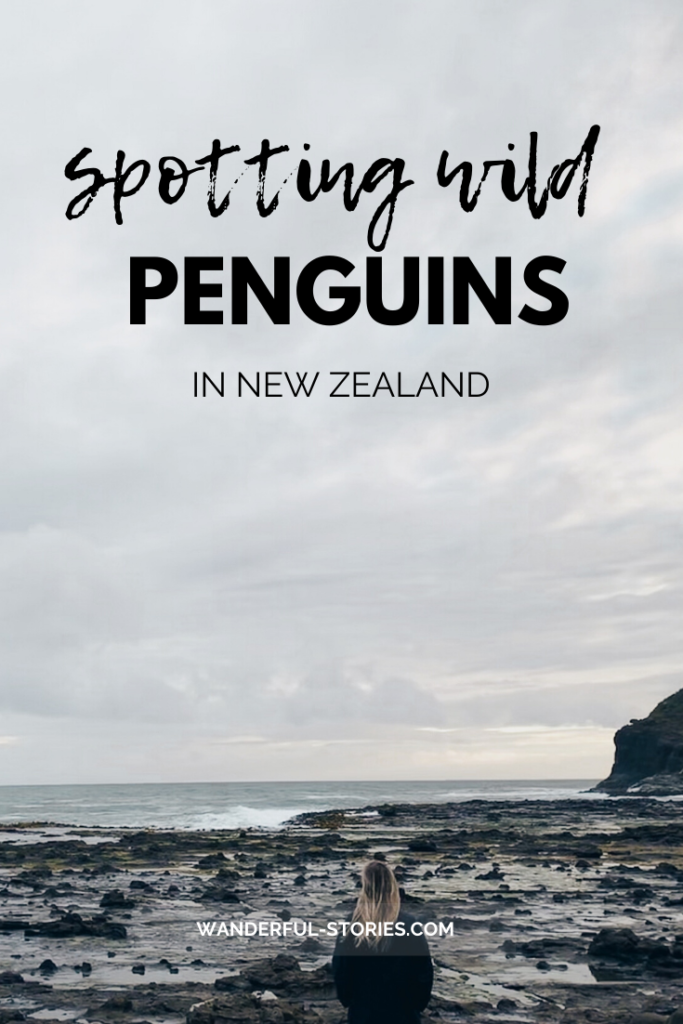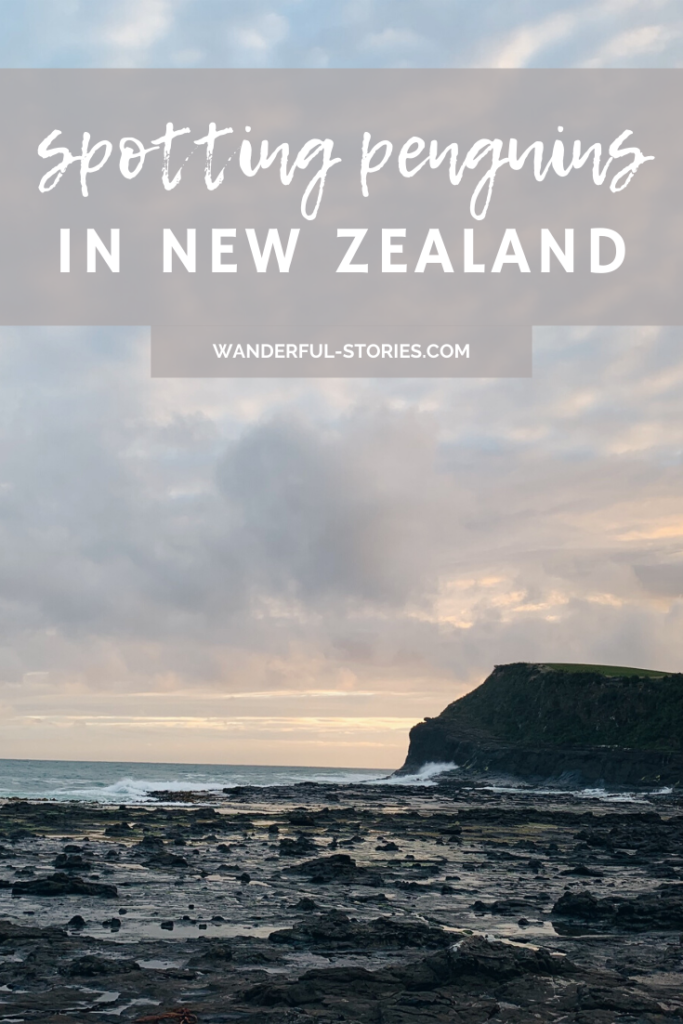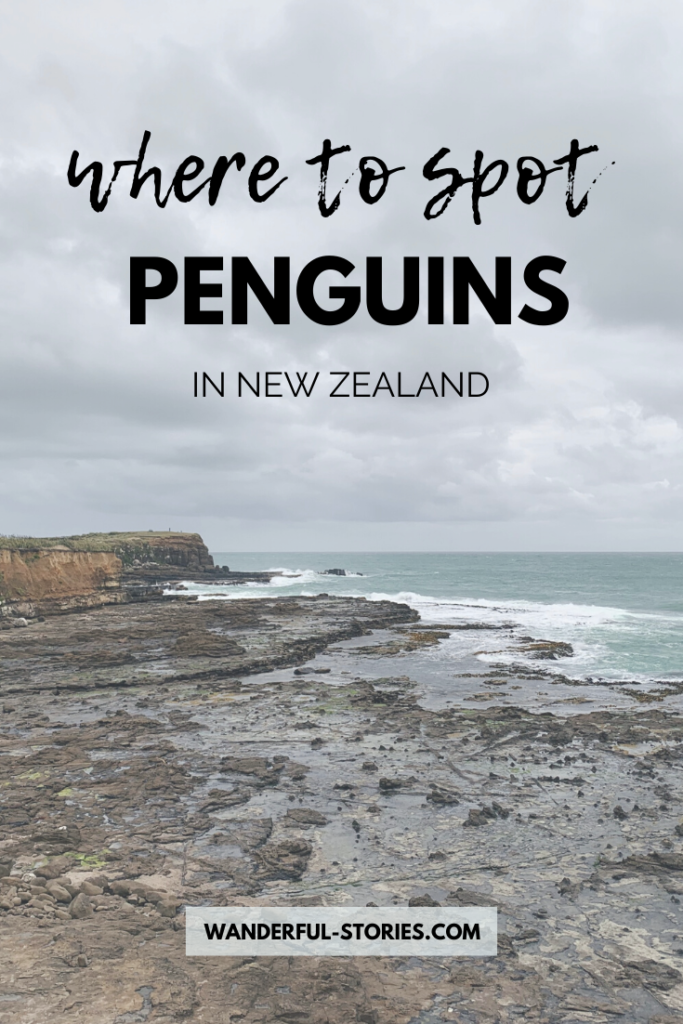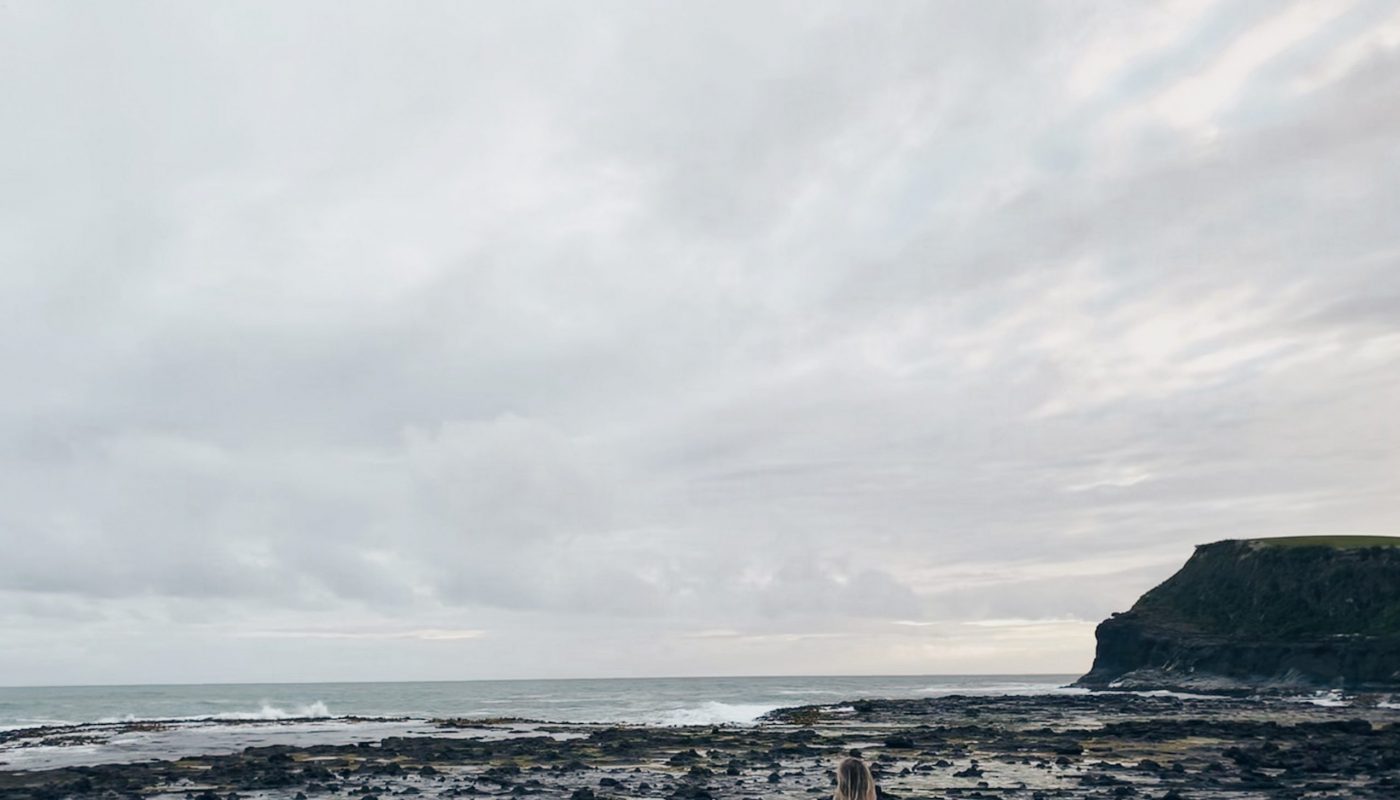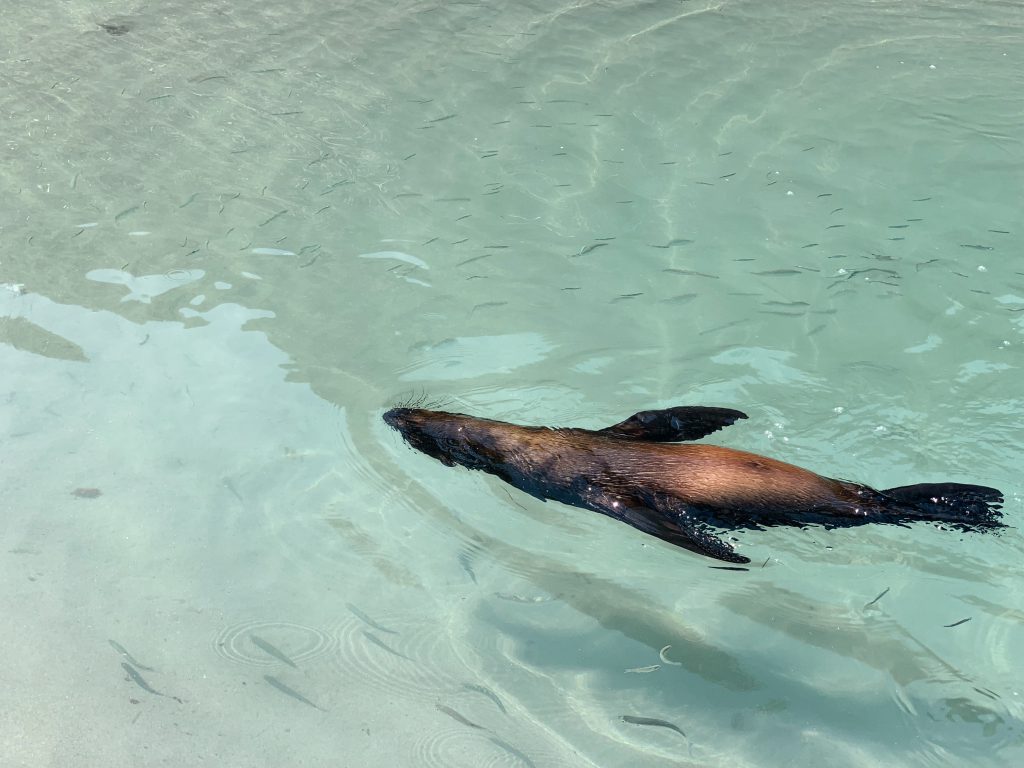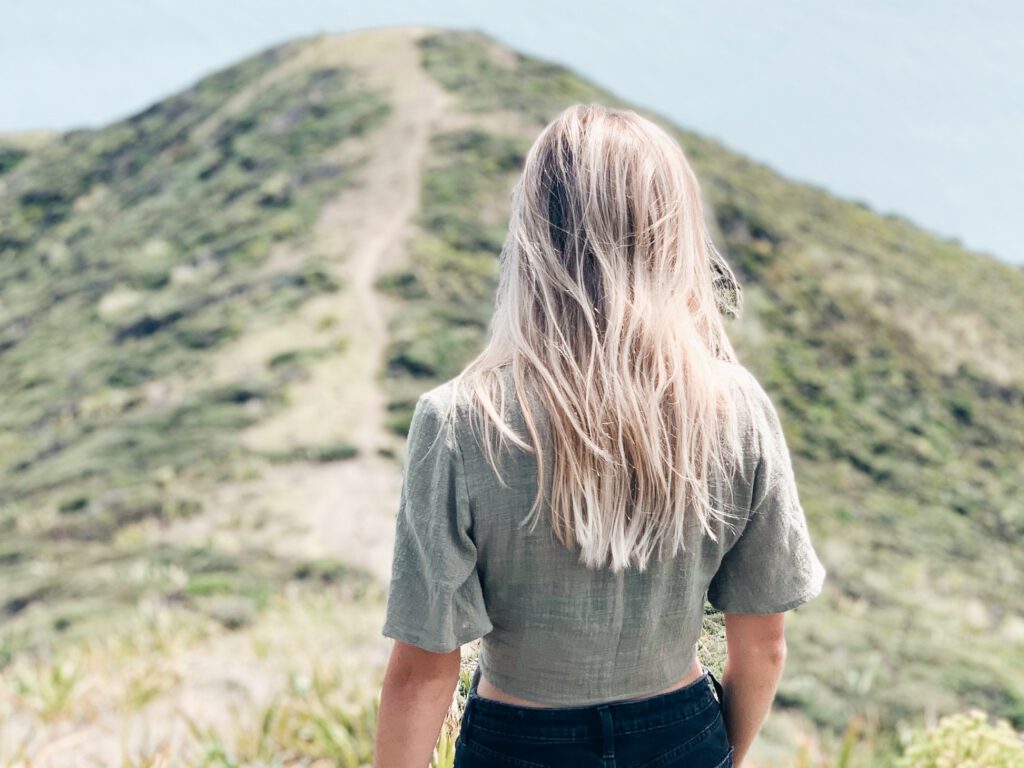Before coming to New Zealand, I always associated penguins with extremely cold places, like Antarctica for example. For some reason – maybe because of nature films or something – I had these mental images of penguins as tiny little black & white figures, standing on big chunks of ice in the middle of the ocean, Antarctica in the backdrop.
So, I was surprised to find out that there are more than several places to spot penguins in New Zealand. Even more so, by finding out that many of those places are actually beaches. How cool is that?! One place that is home to penguins, is the Catlins Coast, which we recently explored. Although there had been several times where we’d hoped to spot some penguins, we usually missed them by arriving at the wrong time. This time, however, we were luckier.
Curio Bay
During one of our days in the Catlins, Frank and I decided to make a trip to Curio Bay. This bay is home to two types of penguins, the yellow-eyed penguin and the little blue penguin. We planned to be there at sunset, a prime time to spot the animals. At sunset, penguins return to their nests after a day of food gathering in the ocean. We were especially keen to spot yellow-eyed penguins, an endangered species. Currently, less than 300 breeding pairs exist on New Zealand mainland (the place they’re naturally found). The penguins are very – even fatally – sensitive to stress inflicted by people (e.g., from flash photography or people blocking their way). Because of that, you can’t come too close and often can view only from specific areas.
Want to read more about yellow-eyed penguins? Check out the official website from the DOC!
We arrived in stormy weather, put on some extra layers of clothing and began our walk down to the beach. (We then swiftly returned as I’d forgotten my glasses. Without them I’d have as much chance of seeing a penguin as I’d have with my eyes closed.) Next, we strolled to the lookout and down to the beach, where an amazing view immediately greeted us. Behind the clouds, the sun was making its way down, grey hues giving the beach a mystical vibe.
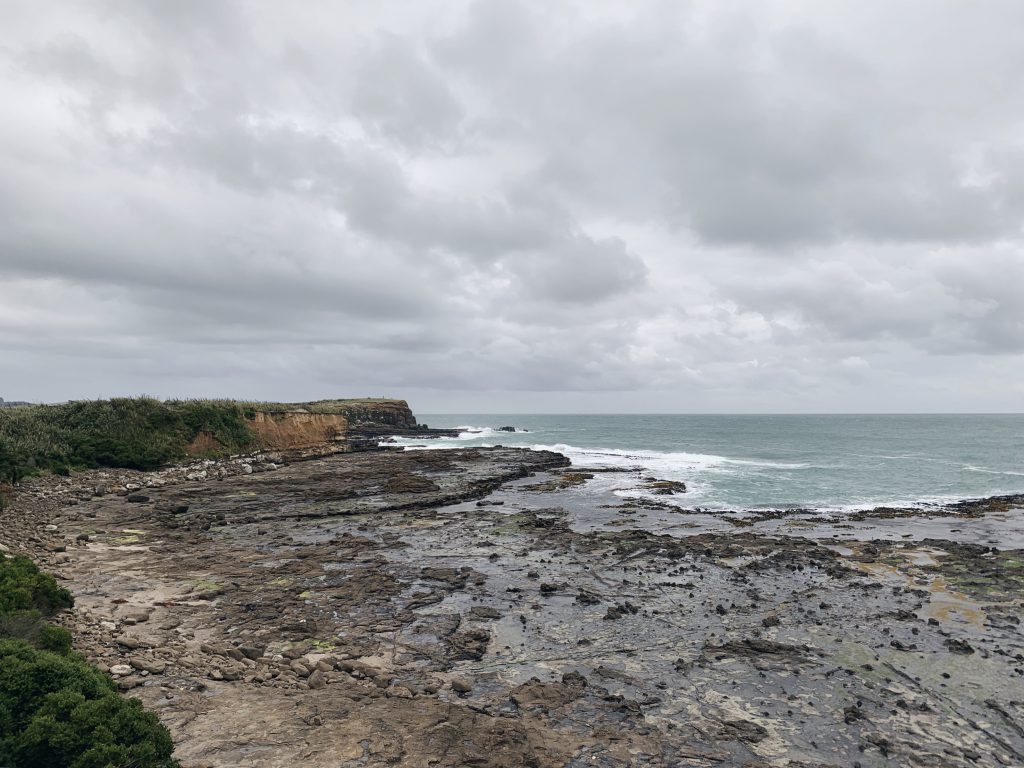
We had been informed that it was likely that two or three yellow-eyed penguins could be spotted on the beach. Unfortunately, this number has declined a lot in recent years. One penguin was said to usually arrive around 8 pm, while the other two normally stayed out for another hour. And so, we waited, looking across the beach to see if we’d see a little bird strolling up.
Yellow-eyed penguins
At once, at about 8.10 pm, a man next to us exclaimed that he had spotted a penguin coming ashore on the far end of the beach. He turned out to be a volunteer for the DOC (Department of Conservation) – there to make sure that the crowd of tourists would not disturb the penguins – and was kind enough to lend his binoculars to us, so we could actually see the penguin up close!
Both Frank and I saw the penguin walk on a rock on the other side of the beach. It stood there to dry and preen (oil) its feathers, getting ready to return to its nest. Although we were not nearly close enough to be able to photograph it well, through the binoculars we could spot the yellow lines around its eyes.
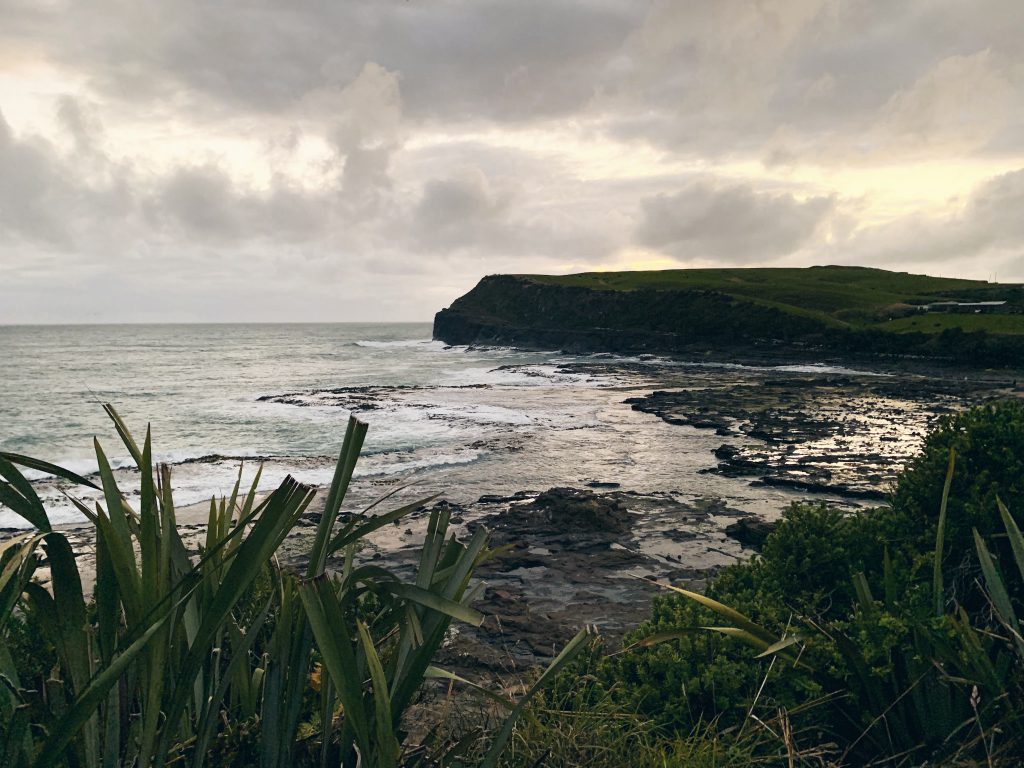
See that rock, in the middle, with the little white dots? The bigger white spot, closest to the sea, is a yellow-eyed penguin!
While waiting for the other penguins to come ashore, we spoke with the friendly volunteer about the yellow-eyed penguins. Finally, after waiting some more, at around 9 pm (right on schedule!) a second penguin walked upon the beach. This time, it came much closer to where we were standing. We walked up the viewing platform to get a better view and watched the penguin until the darkness fell. And so, we returned to the campground kitchen to finally make dinner at 10 pm, excited about having seen two of the rare penguins.
Love reading about New Zealand’s wildlife? You might also like my adventure swimming with wild dolphins in the open sea in Kaikoura.
Liked this post? Save it for later!
